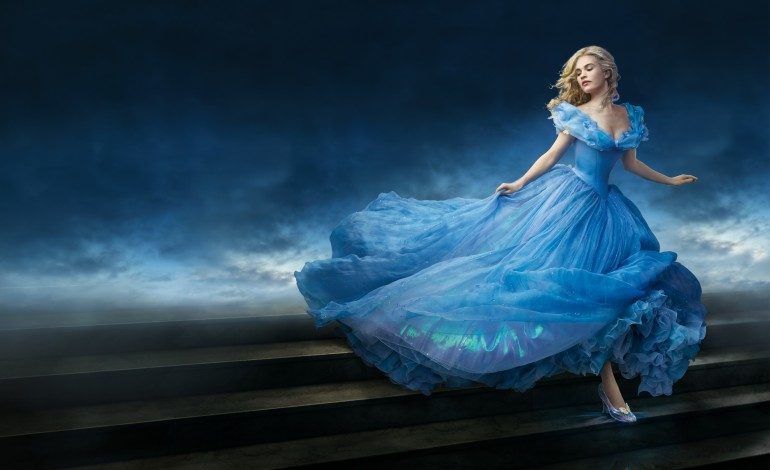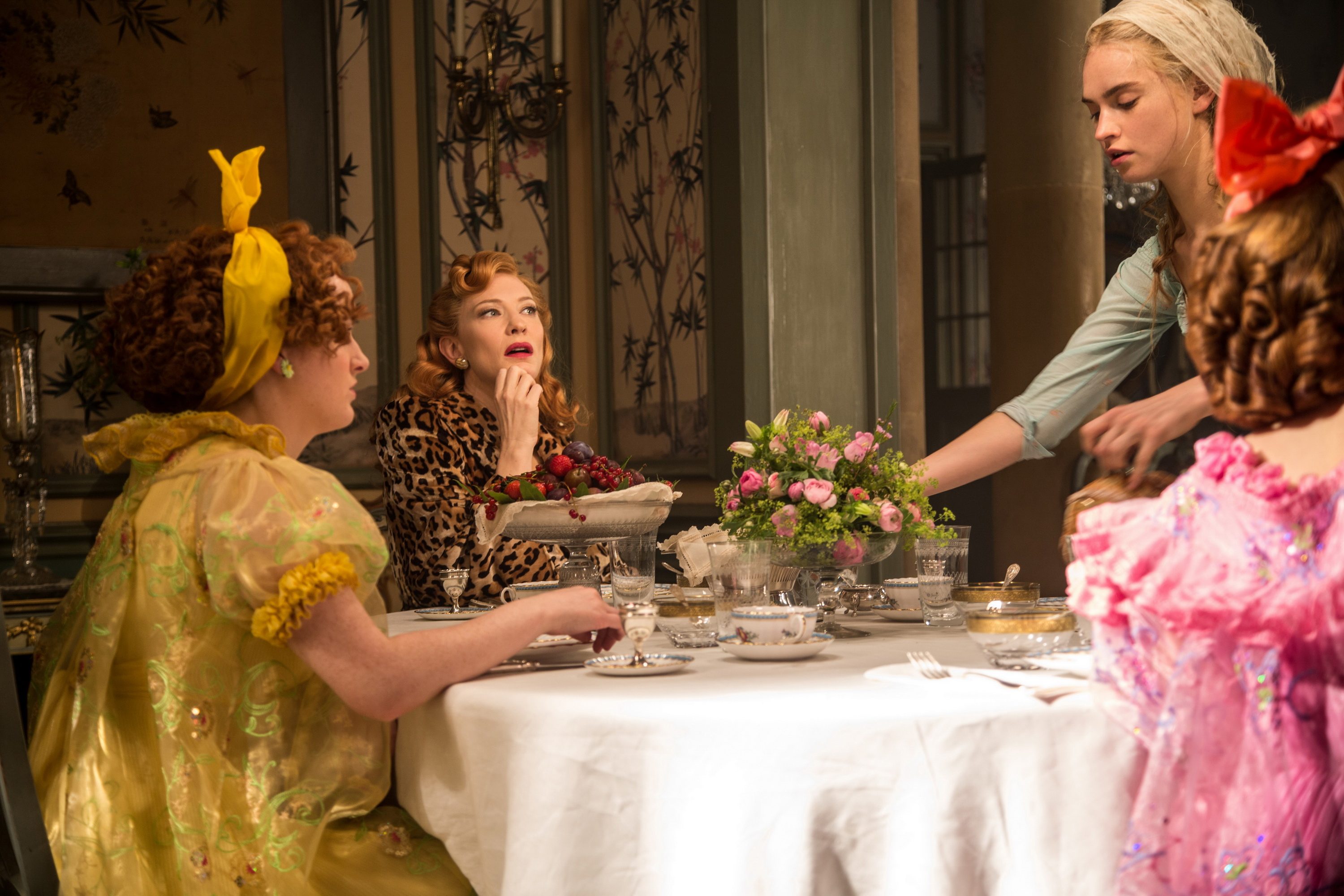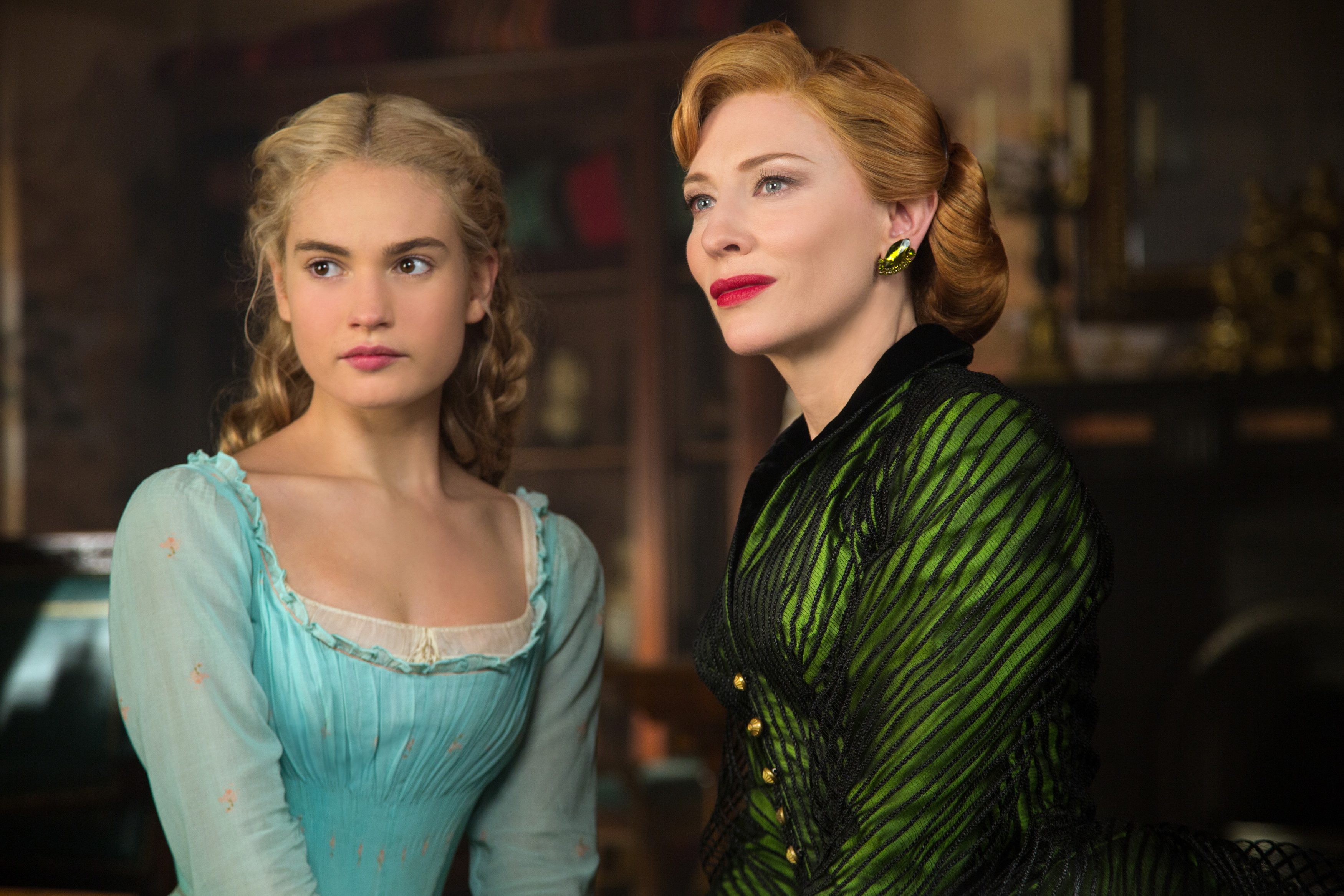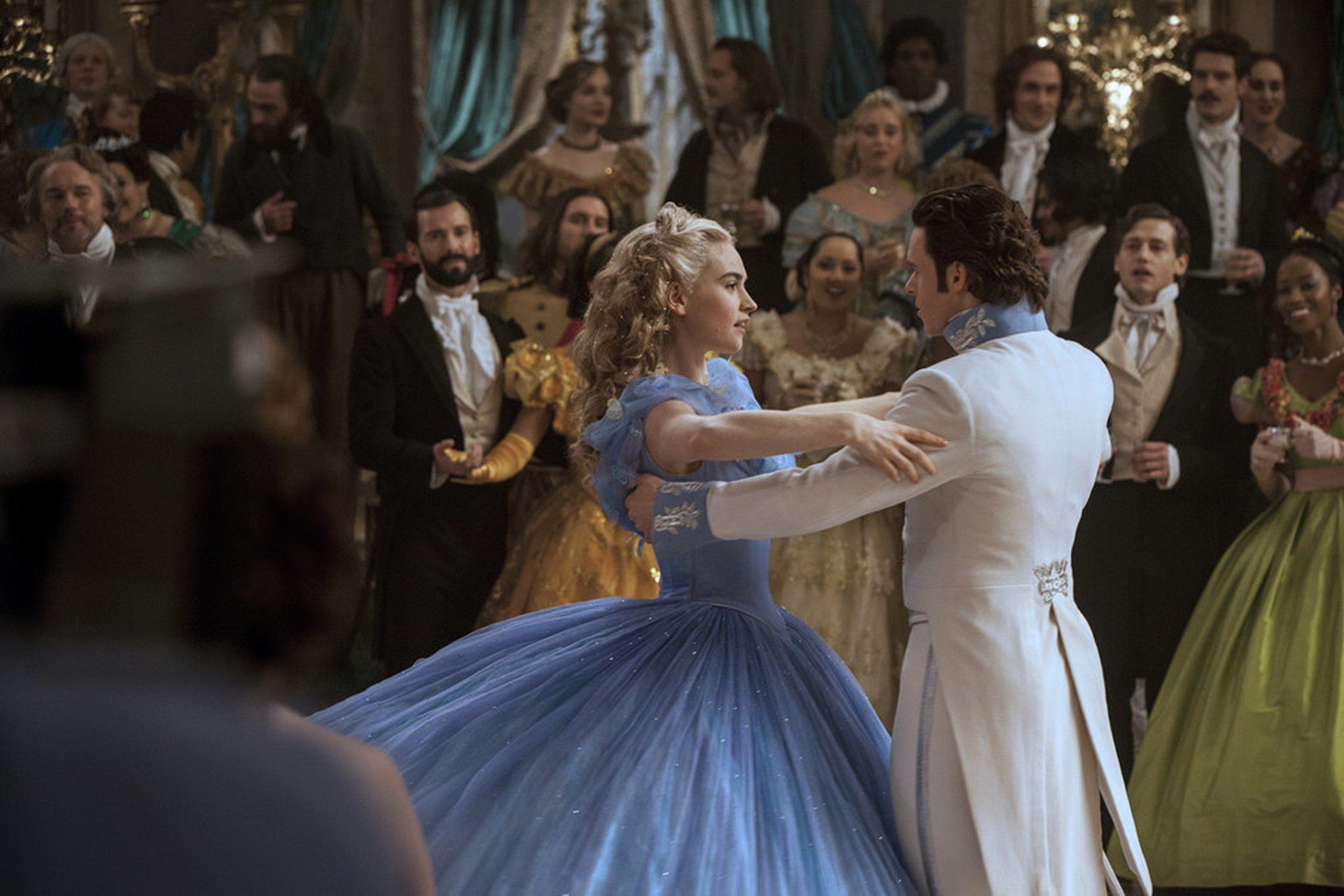

The following contains spoilers for Cinderella – just in case you’re one of the two people who have never seen the animated Disney version.
James: So just to get things started, how did you feel about the live action treatment of Cinderella?
Rachel: My only reservation about the film after seeing it is that I am not totally convinced that the story needed retelling. That being said, I thoroughly enjoyed it. Going in, I thought I was going to be disappointed based on the original story, the gender relations at play, and whether or not it would be a valuable story to be retelling to young girls and boys. However, I thought the writers made some subtle yet effective changes that quelled my misgivings.
James: I’ve had some major reservations about the whole “let’s turn all the classic Disney animated films into live action movies” and I had some doubts heading into Cinderella. However, it’s clearly the strongest of their recent attempts and felt refreshing as a result. Even though the film is set in an old-fashioned template, there was always something on screen to keep me interested and there was a refreshing take on some of the more troubling gender politics that always seem to come into play with Cinderella as a whole.
Rachel: Speaking of the gender politics, (i.e. a handsome prince essentially saving Cinderella from a world of squalor) this rendition of the story kind of flipped the script. (Cinder)Ella’s character in this film reminded me of one of my favorite movie quotes from The Truman Show: “We accept the reality of the world with which we are presented.” Cinderella is a challenge to this idea, not belonging to the restrictive socio-economic world she exists in and is almost a figure of enlightenment – an Elizabeth Bennett, if you will. She lives in a world where almost the only way in which women of meager means can survive is through marriage (a notion reflected in her stepmother, a character who has been beaten down by widowhood). Instead of conforming to that fate, Cinderella puts her stock in the natural world and in “kindness and courage,” and through her beliefs enlightens those around her. She even instills the idea of, “Just because it is, doesn’t mean it should be,” in the prince. The greatest testament to this is at the end, when she is able to forgive her stepmother and recognize the terrible circumstances that women had to face at that time (although the “kindness and courage” message shouldn’t coincide with their abusive relationship).
James: I like the Elizabeth Bennett comparison a lot, actually. What really made a difference here, I think, is that Chris Weitz (writer) and Kenneth Branagh (director) injected a spine to the character, a sense of agency that always troubled me about the 1950 animated film. I read an interview with the films’ star, Lily James, who said she tried to infuse the character with a Gandhi-like sensibility, which accounts for the kindness and forgiveness Ella doles out throughout the film. I admired the way the film was able to pull this off without ever getting too schmaltzy.
Rachel: That’s actually very interesting, and I noticed hints of spirituality throughout, with the overall guiding force of kindness and also with her connection to nature. In very subtle ways, she was able to move the characters through her moral center as well. Something I also appreciated was the romantic plot. She and the prince were able to create a partnership among themselves. Their mutual “will you take me as I am?” professions of love spoke to that and had me totally on board.
James: I think this really is the first version of Cinderella I’ve seen where I actually cared about the romance at the center, which is a testament to the sincere but strong writing of the characters, and the actors. I’ve always felt the animated film is one of the lesser Disney classics because neither Cinderella nor the Prince are particularly interesting characters – Lady Tremaine was always my focus. Even in more revisionist iterations of the story (like Drew Barrymore’s Ever After) the romance typically reads as an after-thought, at least for me.
Rachel: I agree with you – I have never felt an affinity toward this particular Disney fairy tale. I’m starting to think that’s why they chose to make the live-action version and give it new life (unless there will eventually be a live-action film for every Disney story and this is just one of the first by chance). Since you brought up Lady Tremaine, what are your thoughts on her character and Cate Blanchett’s performance?
James: Blanchett is terrific. She has the intimidating stance and glares down, and her line readings are great fun without descending too much into camp. I was surprised by how much I liked the way they spruced up Cinderella and how well Lily James acquainted to the role, but as a longtime Blanchett fan, I was expecting her to deliver from the start. What were your thoughts?
Rachel: At first I thought Blanchett was perfect, but in an obvious way. For me, she embodies the broody regalness that Lady Tremaine calls for. However, by the end of the film I was able to really appreciate what she was able to do with the character. She was a villain, but a forgivable one (as I mentioned before). Blanchett was able to perform the malevolent right along with the somber, so that I actually felt for her and her situation. So, although I believed it was obvious at first, the second I saw Helena Bonham Carter as the Fairy Godmother – a truly type-cast role for her in my estimation – I changed my mind.
James: There seemed to a conscious choice to add a sort of pathetic quality to Lady Tremaine, rather than just make her the “villain.” I really responded to it and the subtle modulations in Blanchett’s performance to convey that. The filmmakers made her a three-dimensional character. You mentioned Carter as being type-cast in the role of Fairy Godmother – I’m not sure I completely agree (I was excited that she wasn’t wearing black for the first time in ages, for instance), but how did the famous transformation sequence work for you here?
Rachel: That’s a good point. For the transformation, although the traditional story could probably not exist in the same way without it, I was slightly disappointed by its campiness. The film up to that point definitely had whimsical aspects woven in, but had a heavier tone of realism, which I was enjoying. The whole sequence ended up being a necessary evil for me. However, since this film’s target audience is children, it was appropriate in that regard.
James: I like your “necessary evil” reaction. I felt similarly. Obviously, there was no way a big effects-laden transformation scene wouldn’t happen in a Disney produced version of Cinderella. Once Carter arrived, I kind of just felt, “Okay, let’s get on with it.” On a production value level, it was totally fine, but the whole sequence felt a bit too long and strenuous. Also, it’s not exactly like this film was lacking for eye candy at all, considering the beautiful production design, costume design, and cinematography – colors were coming at us throughout the entire runtime and many of them were far more beautifully realized than in this lone sequence.
Rachel: I agree. I sincerely enjoyed all the elements of production – cinematography, costume design, etc. I also need to say that the choreography for the first dance might have been the best waltz I have ever seen – I was entranced. Moving on, how did you feel about Richard Madden as the Prince?
James: Madden was really well cast as the Prince, and I thought the chemistry between he and James was particularly strong. As we mentioned earlier, the prince and Cinderella roles typically haven’t done much for me because both are usually played out as the barest of archetypes. The Prince still doesn’t have a name here, but, like Ella, he’s sharper and more smartly constructed. Does the artistic success of Cinderella make you feel confident about other live-action adaptation Disney has in the works (e.g.- Beauty and the Beast, Dumbo)?
Rachel: My initial reaction upon hearing about Beauty and the Beast was excitement, due to the fact that it is one of my favorite Disney films. That being said, the idea of human-like animals or beast-like humans – which we’ll see in both upcoming films – gives me some trepidation. I am interested to see what Bill Condon (BatB director) can do with it. He has a pretty mature filmography (and is familiar with dark romances, like Twilight: Breaking Dawn). I honestly don’t know what to expect with Tim Burton and Dumbo since he is hit-or-miss for me as a filmmaker, and also because Dumbo has never resonated with me in the past. Something that I took away from Cinderella was a feeling that I could have been watching it ten years ago. At first I was a little put off by this, but in the long run I think it will give it a timeless quality, which is a testament to Branagh’s good work. Hopefully Condon and Burton can bring these stories new life as well while respecting their “classic” legacies.
James: I remain skeptical – Maleficent and Alice in Wonderland were both pretty hideous by my estimation. Yet the filmmakers made some magic with Cinderella, I think, by just re-tinkering the characters a little bit and making them a bit sharper. There wasn’t particularly this need to reboot or completely mess with the mythology of the story. Hopefully that will continue as the live action reboots will likely be around until the entire Disney canon has been redone.




